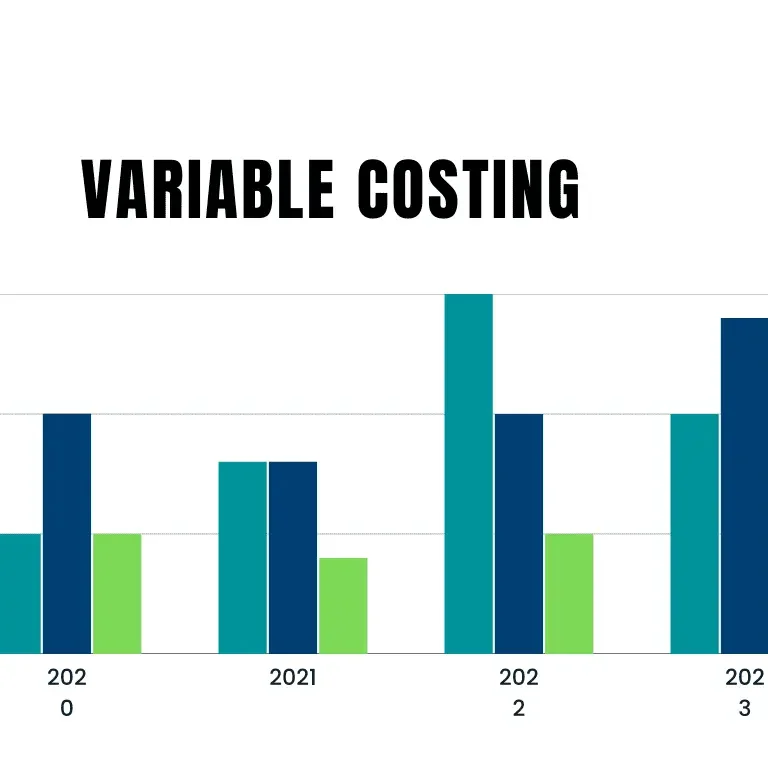What is absorption costing?
Absorption costing is a method used in managerial accounting to allocate all production costs, both variable and fixed, to the units of a product. It is also known as full costing. The underlying principle of absorption costing is that a product’s total cost should include not only its direct materials, direct labor, and variable manufacturing overhead, but also a share of the fixed manufacturing overhead.
In this method, fixed manufacturing overhead costs are absorbed into the product’s cost base and spread across the units produced. In addition to the variable costs directly related to its production, each unit bears a portion of the fixed costs. Absorption costing provides a more comprehensive view of the total cost incurred in manufacturing a product, as it accounts for all manufacturing costs, both variable and fixed.
Concepts of absorption costing
It incorporates both variable and fixed costs into the total cost of a product. It allocates direct materials, direct labor, variable manufacturing overhead, and a portion of fixed manufacturing overhead to each unit produced. This approach ensures that all production costs are accounted for in determining the product’s cost.
It is used for financial reporting purposes and helps calculate inventory valuation and cost of goods sold. By including fixed costs, it aims to provide a comprehensive view of the total expenses incurred in manufacturing a product and ensures that each unit contributes to covering all costs.

Elemnets of absorption costing
- Direct materials: This includes the cost of raw materials used directly in the production process, such as components or ingredients.
- Direct labor: It refers to the wages, salaries, and benefits paid to the employees directly involved in manufacturing the product.
- Variable manufacturing overhead: These are costs that fluctuate based on the production volume, including expenses like electricity, supplies, and indirect labor.
- Fixed manufacturing overhead: This comprises costs that remain constant regardless of production levels, such as rent, depreciation, insurance, and salaries of supervisory staff.
Total cost:
The sum of direct materials, direct labor, variable manufacturing overhead, and a share of fixed manufacturing overhead gives the overall cost per unit.
Inventory valuation:
It helps accurately value the inventory by incorporating all manufacturing costs.
Cost of goods sold:
By considering all production costs, It enables the calculation of the cost of goods sold, providing a comprehensive view of the expenses incurred in manufacturing the products.
Absorption costing vs variable costing
| Aspect | Absorption Costing | Variable Costing |
|---|---|---|
| Treatment of Fixed Costs | Fixed manufacturing overhead is included in product costs and allocated to units produced. | Fixed manufacturing overhead is treated as a period cost and not included in product costs. |
| Cost Allocation | Allocates both variable and fixed costs to products. | Allocates only variable costs to products. |
| Inventory Valuation | Includes fixed manufacturing overhead in inventory valuation. | Excludes fixed manufacturing overhead from inventory valuation. |
| Income Statement | Shows higher net income when units produced exceed units sold due to absorption of fixed costs. | Shows a consistent net income regardless of the number of units produced and sold. |
| Decision-Making | Provides insights into the overall cost structure and profitability of products. | Highlights the direct costs associated with producing and selling each unit. |
Practical Example for absorption costing
Let’s consider an example of absorption costing in a manufacturing company. Suppose Company XYZ produces and sells widgets. The following costs are associated with widget production:
- Direct materials cost $10 per widget.
- Direct labor cost: $5 per widget.
- Variable manufacturing overhead: $2 per widget.
- Fixed manufacturing overhead: $20,000 per month.
In a given month, Company XYZ produces 2,000 widgets and sells 1,800 widgets. Using this method, the total cost per widget would be $37 ($10 + $5 + $2 + $20,000/2,000).
Now, let’s look at the cost sheet for Company XYZ:

Advantages of absorption costing
It offers several advantages that make it a widely used costing method in various industries:
- Accurate product cost determination: It considers both variable and fixed manufacturing costs, providing a comprehensive view of the total cost per unit. This enables more accurate product pricing and profit analysis.
- GAAP compliance: It aligns with Generally Accepted Accounting Principles (GAAP) and is required for external financial reporting. It ensures that all costs, including fixed overhead, are properly allocated to products, facilitating compliance with regulatory standards.
- Inventory valuation: By including fixed manufacturing overhead in product costs, absorption costing provides a more accurate valuation of inventory. This is particularly beneficial for businesses that carry significant levels of inventory.
- Cost control and decision-making: It helps management analyze the complete cost structure of products. It enables better decision-making regarding pricing, production volume, and resource allocation, as it reveals the true cost impact of various factors.
- Improved financial analysis: It provides a more realistic and comprehensive picture of financial performance. It enhances comparability between different periods and allows for accurate calculation of gross profit and net income.
Limiattions of absorption costing
- Fixed cost allocation: Absorption costing allocates fixed manufacturing overhead to units produced, regardless of actual sales volume. This can result in over/under absorption of costs, distorting the per-unit cost and potentially leading to inaccurate pricing decisions.
- Difficulty in cost control: Absorption costing may make it challenging to control and manage fixed costs effectively since they are spread over all units produced. Changes in production levels can affect cost per unit and make cost control more complex.
- Inventory valuation impact: Including fixed overhead in inventory valuation can lead to carrying costs that may not reflect the true market value of the inventory.
- Inconsistent net income: Net income under absorption costing can fluctuate based on changes in inventory levels and production volumes, which may complicate financial analysis and comparison.
- Focus on historical costs: Absorption costing primarily relies on historical costs, which may not always reflect current market conditions and competitive pricing pressures.




